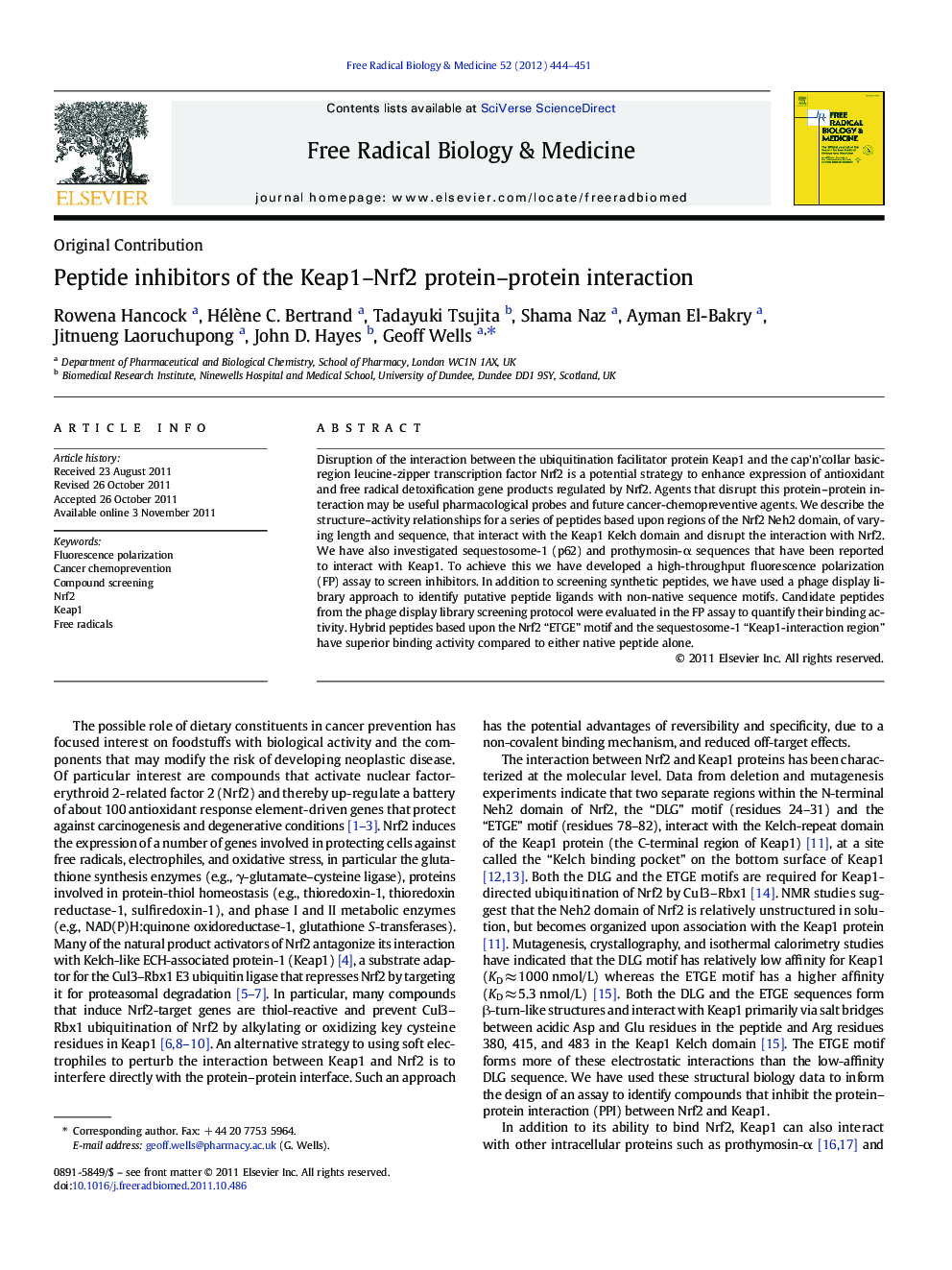| Article ID | Journal | Published Year | Pages | File Type |
|---|---|---|---|---|
| 1908946 | Free Radical Biology and Medicine | 2012 | 8 Pages |
Disruption of the interaction between the ubiquitination facilitator protein Keap1 and the cap'n’collar basic-region leucine-zipper transcription factor Nrf2 is a potential strategy to enhance expression of antioxidant and free radical detoxification gene products regulated by Nrf2. Agents that disrupt this protein–protein interaction may be useful pharmacological probes and future cancer-chemopreventive agents. We describe the structure–activity relationships for a series of peptides based upon regions of the Nrf2 Neh2 domain, of varying length and sequence, that interact with the Keap1 Kelch domain and disrupt the interaction with Nrf2. We have also investigated sequestosome-1 (p62) and prothymosin-α sequences that have been reported to interact with Keap1. To achieve this we have developed a high-throughput fluorescence polarization (FP) assay to screen inhibitors. In addition to screening synthetic peptides, we have used a phage display library approach to identify putative peptide ligands with non-native sequence motifs. Candidate peptides from the phage display library screening protocol were evaluated in the FP assay to quantify their binding activity. Hybrid peptides based upon the Nrf2 “ETGE” motif and the sequestosome-1 “Keap1-interaction region” have superior binding activity compared to either native peptide alone.
Graphical abstractFigure optionsDownload full-size imageDownload high-quality image (257 K)Download as PowerPoint slideHighlights► Peptide and phage display library screening identified Keap1-Nrf2 binding inhibitors. ► Inhibition was quantified using a fluorescence polarisation assay. ► SAR data showed that hybrid sequestosome-1/Nrf2 sequences have the highest activity. ► Phosphorylation of sequestosome-1 may play a role in modulating its Keap1 binding.
